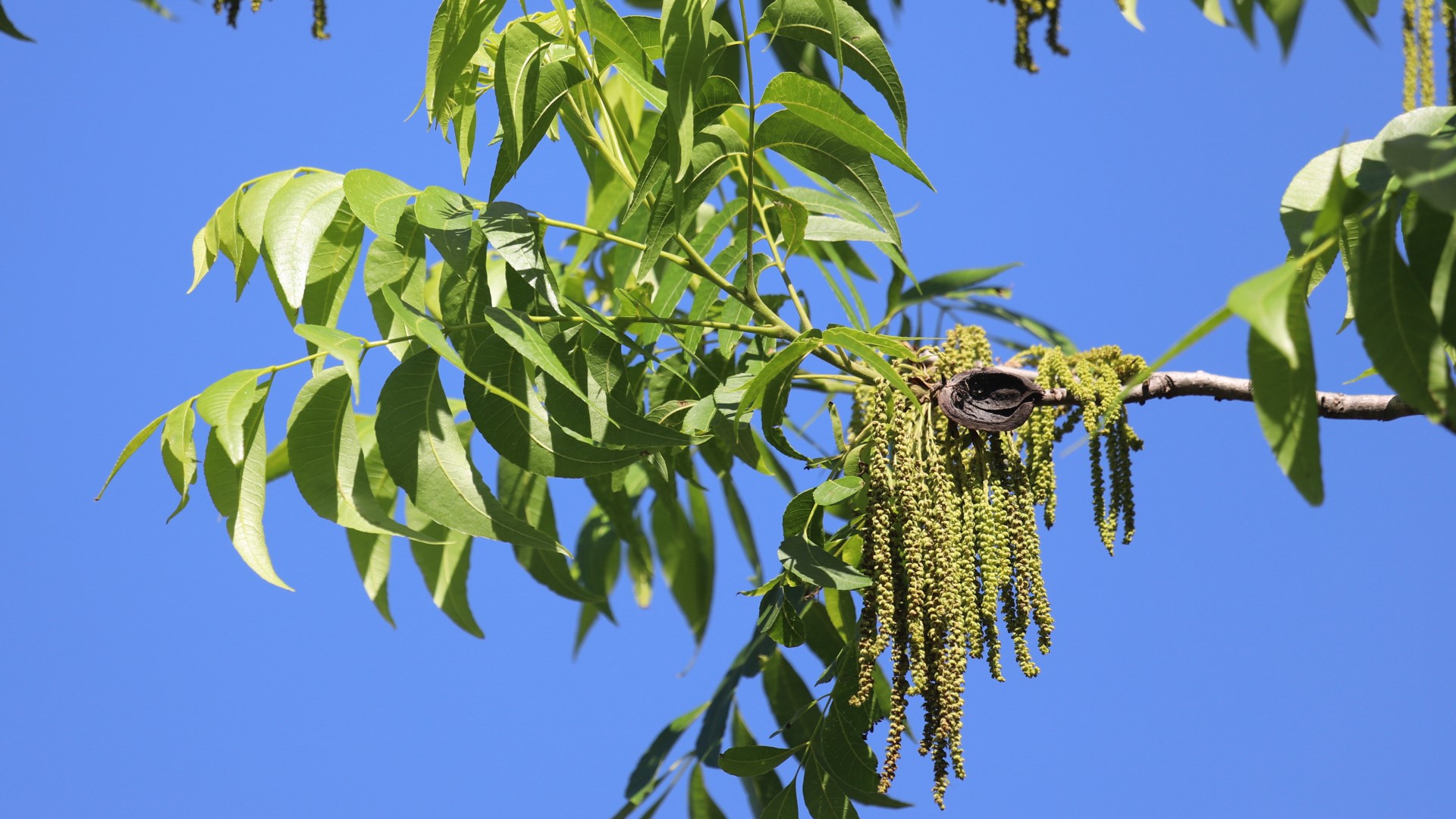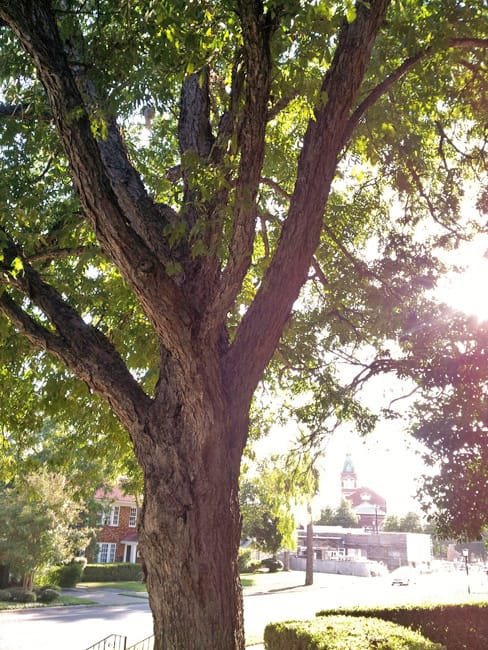Deciduous sun or shade, with fragrant hickory leaves and a huge, shapely trunk. Probably the tallest-growing tree in Texas. Pecan grows slowly and needs lots of time, space, and deep soil. It litters heavily and tends to drop large branches in wind, so it’s not always appropriate for smaller landscapes, power lines, or dry upland sites. However, it provides the kind of dappled summer shade that’s appreciated by many old-fashioned gardeners and garden plants. If you’ve got healthy established pecans in the yard, you probably have fairly deep soil and maybe even happy St. Augustine grass.
Pecan is one of the most recently domesticated major crops. There is no agreement as to the proper pronunciation of the name.
Pruning is always optional. As with any tree, remove no more than 25% of the total canopy during any five-year cycle. To maintain a healthy specimen, never remove more than the lowest third of the tree in a single pruning period — for example on a 12-foot tree, stick to the lowest 4 feet.
Pecan is a heavy litterer, especially after big storms.


